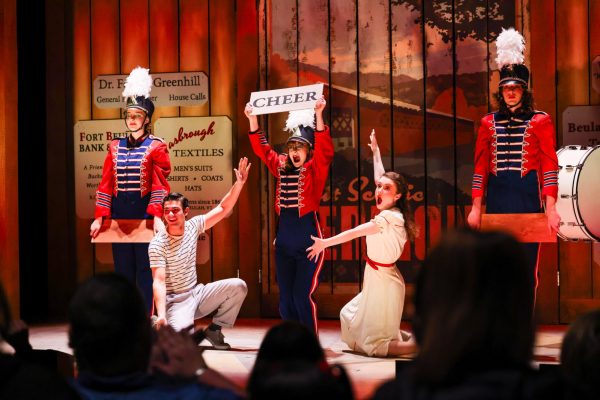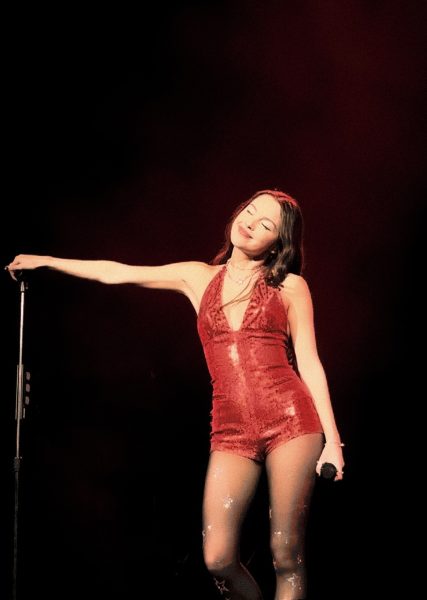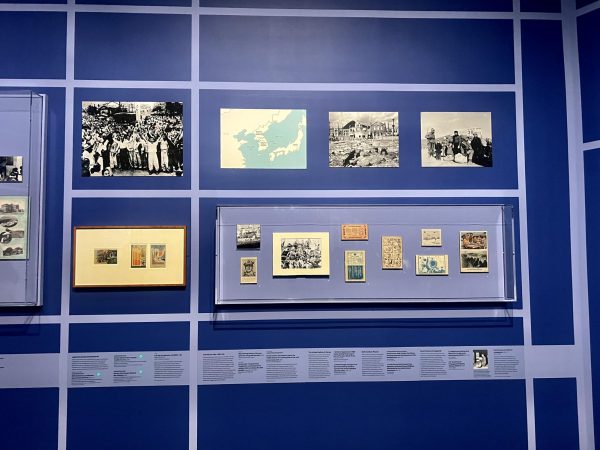C. Walsh: more than a theatre, a home
Suffolk losing creative beacon
April 27, 2016
“In my first year, someone looked me in the eye, and they said ‘no one here will ever invest money in this theatre, so don’t expect it,’” said Dr. Marilyn Plotkins, chair of the Theatre Department.
She expected nothing, but would strive to stand out when it came to the former Suffolk University Law School building, then auditorium, and now the treasured C. Walsh Theatre. In times past, the theatre department did not receive the same standing ovation from its administration as it has in recent years.
She had walked into a basement of a space that had clanking pipes and an ancient technical system. The building was barely being used as a theatre, and was used more for upper administration, which would regularly kick them out of their element — even in the middle of a class.
“Whenever there was something, we were out,” said Plotkins as she told the story of getting calls from the president’s office saying that he needed the space for an event or meeting.
Plotkins, though, stopped at nothing to stand apart from her predecessor and focused on the development of a student theatre program.
At the time, she thought she would not be involved in directing professional productions at the C. Walsh, so she focused on the classes she taught instead.
“I was told that there would never be any staff, and I had no staff, and ultimately, I had a half-time business manager and I got a part-time technical director,” said Plotkins. “They would look at the theatre and say ‘I can’t believe you’re operating this way.’”
With the help of now deceased Board of Trustees member Tom Walsh, the theatre’s 1987 renovation covered the expenses to paint the walls, updating the horrid chipping turquoise and mustard color, and reupholstered the seats.
In 1999, twelve years after the upgrade, the theatre had proved itself and became its own department. Plotkins hired her first faculty member, Wes Savick. In that same year, the Law school finally left the theatre, bringing upper administration with it. The days of being kicked out of their classes for the president to use the theatre for meetings and events were finally over.
“That changed everything,” said Plotkins.
Shortly after, Chris DeStefano, who started in Plotkins’ office as a work-study student, founded the Performing Arts Office (PAO). From there, he worked his way up to create opportunities for student participation in art programs outside the theatre department.
Even with the two departments, there was not enough space for the flourishing performing arts programs at Suffolk.
“We were regularly hosting every major dance company, many of the major music companies in town,” said Plotkins. “I mean with the top dancers, the top choreographers, the top musicians in town. We had TheatreWorks in residence.”
PAO’s current Associate Director Kathy Maloney said the theatre gave groups across campus the chance to succeed by providing performers in international student organizations, and the Techies Union a place to call home.
“It was in many ways the cultural hub of the campus,” said Maloney.
Plotkins said these students learned and developed their talent from Wayne Chin, the technical coordinator for the C. Walsh.
“I can’t overstate how much he had to do with the success of programs that were under the umbrella of PAO, SLI, Orientation and Admission,” said Plotkins. “He did so much to support those events.”
Much like how students will be coming back to a changed campus in the fall, most are willing to adapt.
Freshman Theatre major Kane Harper has been involved with multiple theatre and PAO performances during his first year at Suffolk.
“We’re part of the theatre community, with that you need to be ready for change,” said Harper. “As an actor you need to be ready to change every constant in your life, but it doesn’t make it hurt less.”
“We perform, it’s what we do. Unfortunate to say, but we don’t need the C. Walsh to be great performers, we’ll take it to the common if we need to,” said Harper. “Nothing is changing, but the location that you come see us at.”
Senior Communications major and Rampage Show Choir member Megan Post finds it difficult to say goodbye to a place that was a home to her development throughout her time in college.
“It’s tough for me to know that so many groups are losing a space they could have utilized,” said Post.
For junior marketing major Suzanne Gammer, it’s not just about the performances that were hosted at the Walsh, but the significance of losing the theatre itself.
“It’s the fact that Suffolk won’t have an auditorium of that span to bring everyone together,” said Gammer. “The performing arts groups are losing a stage that saw our growth.”
However, for the Beacon Hill community, the demographics began to change, forcing Suffolk and the theatre out.
When Plotkins had first arrived to Suffolk, Temple Street was nothing, but rentals. At the end of the century, the buildings were converted into condominiums.
“A lot of Harvard-educated lawyers lived on the street, and they didn’t like the noise we were making,” said Plotkins.
To accommodate the Hill residents, Plotkins and C. Walsh and Studio Theatre Managing Director Jim Kaufman created the “good neighbor policy.”
“Technically the C. Walsh may just be a building. On paper, an asset that was worth more sold than it was to hold onto. But realistically, it is a strong part of the fabric of Suffolk,” said Maloney.
“The theatre itself acted as a backdrop for this campus community. It held together its creative backbone,” said Plotkins.
For many students at Suffolk throughout the years, there was nothing like being in an audience and showing your appreciation to performers, even if all you could do was applaud. And there’s nothing like seeing their reaction to that.
“As a performer I liked the warm and close feel of the theatre. It made you feel connected to the audience,” said Lambert. “My favorite memories are probably the semester PAO shows where all of the performing arts groups come together for one show.”
Like a good show, and there were many, the C. Walsh Theatre stays with you.
“I think the best thing about the Walsh were all the people who inhabited it and brought it to life. All the students. In everything,” said Plotkins. “I hope [groups who have performed at C. Walsh] would say how warm that space felt when they were in it. And how they felt at home.”
Plotkins felt that the best thing about C. Walsh was the people who resided in it and revitalized it.
“I think that was the most important thing. I think that’s why people have so much connection to it,” said Plotkins. “It’s not just that it was the only space that served so many people. I think that it’s it really felt like home.”


















